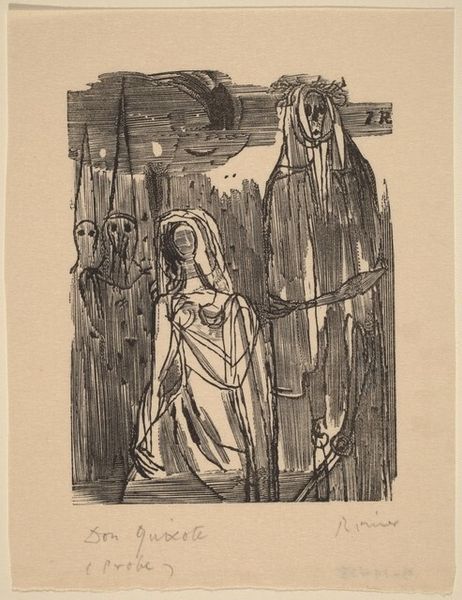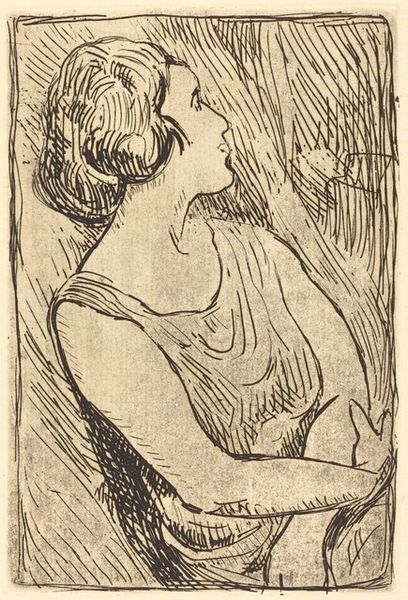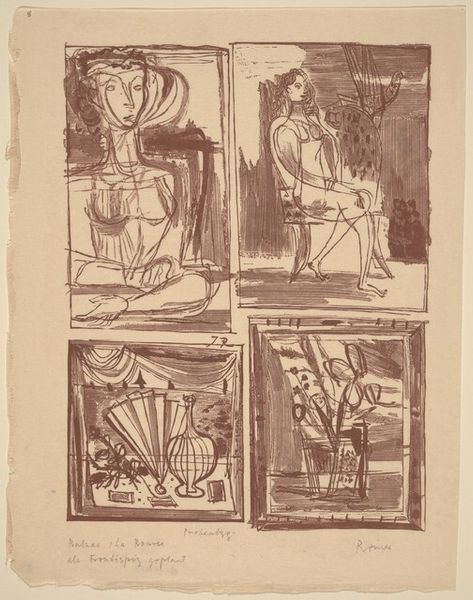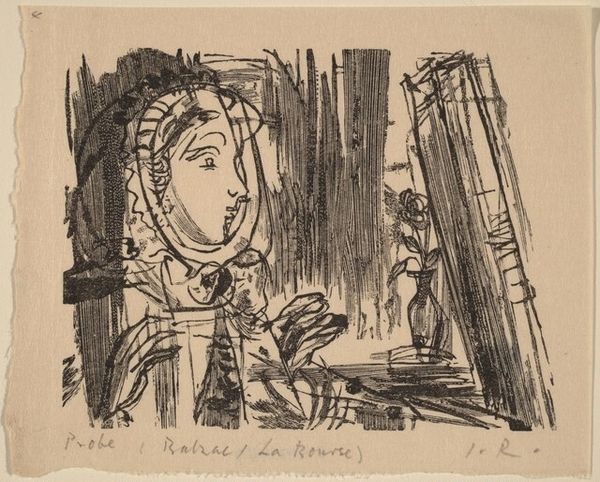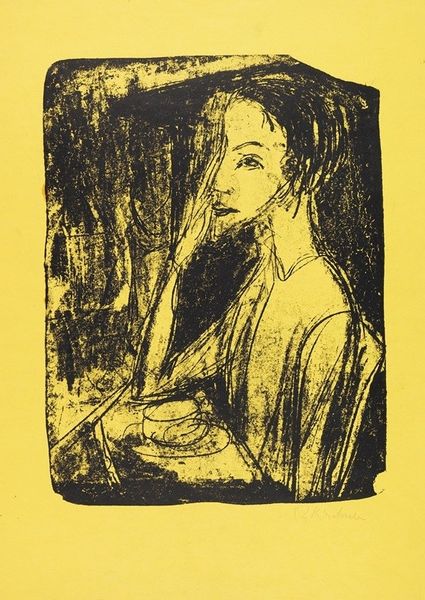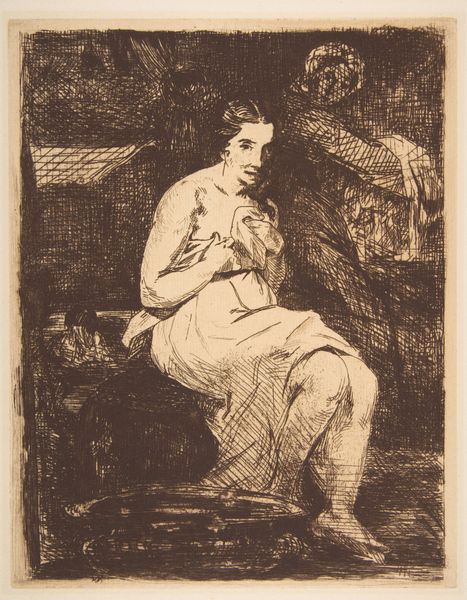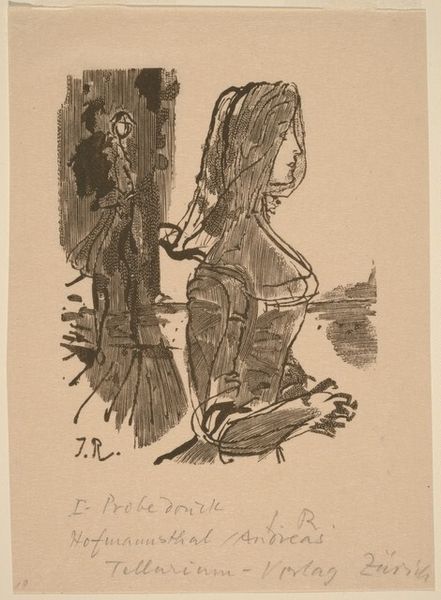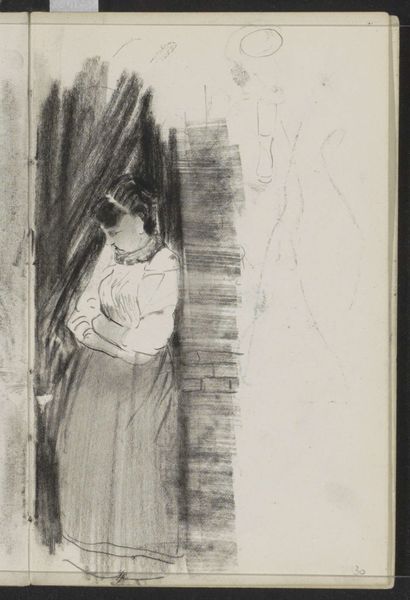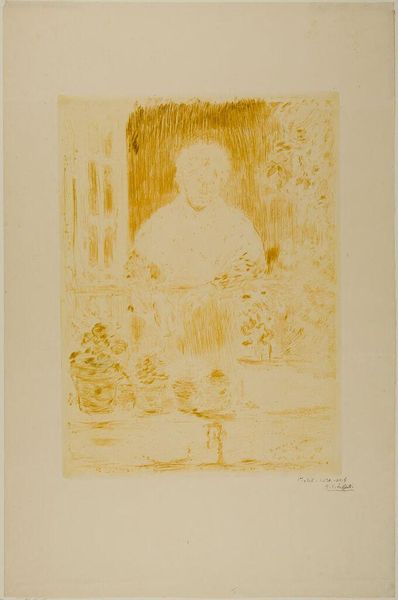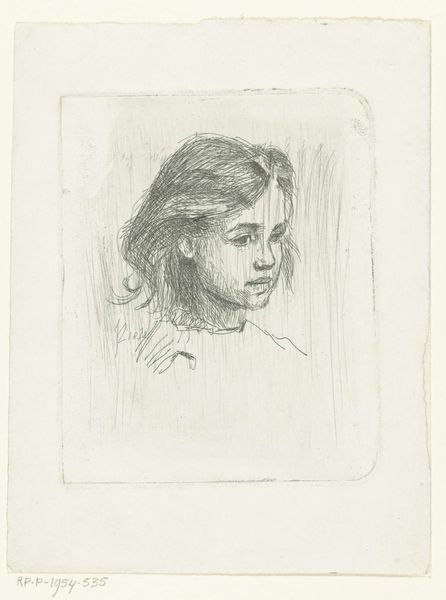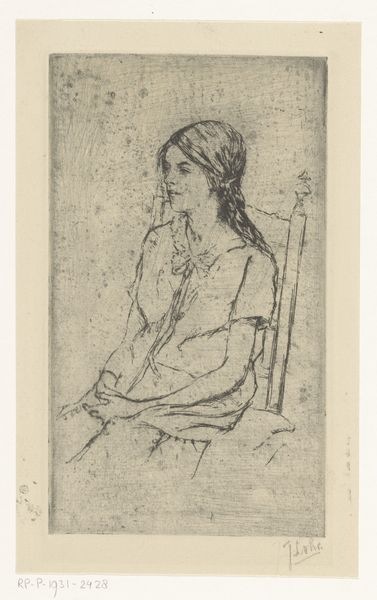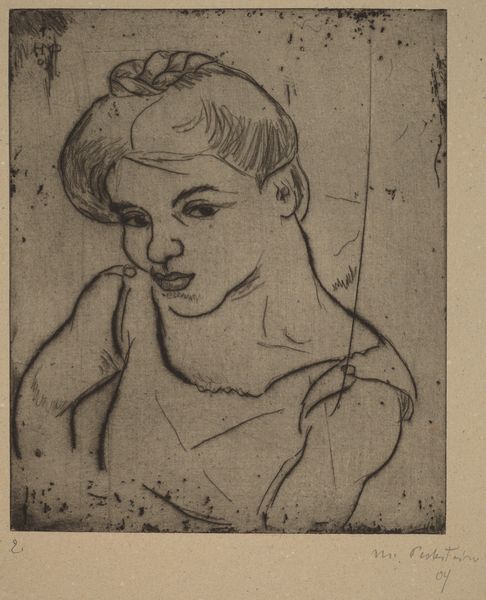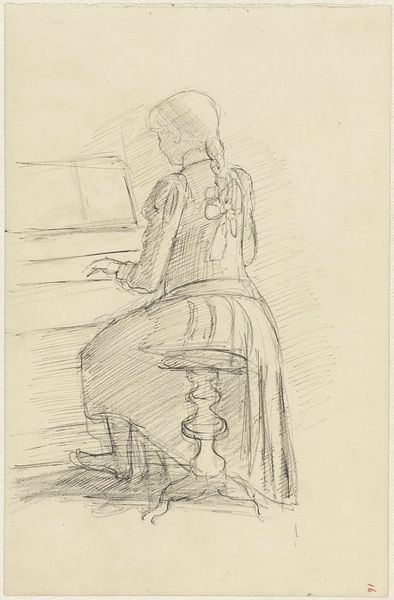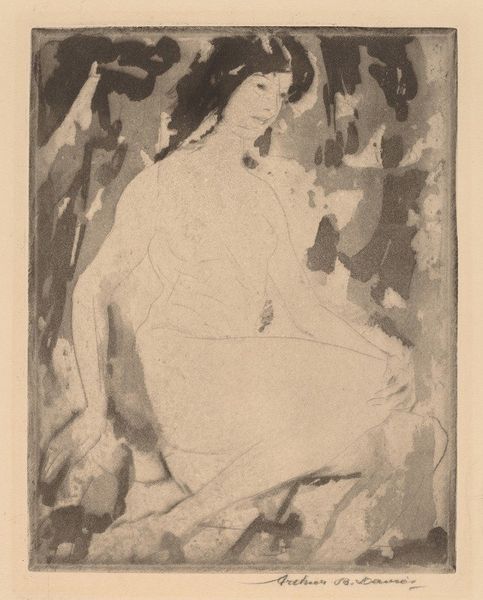
drawing, print, etching, ink
#
portrait
#
drawing
#
ink drawing
# print
#
etching
#
etching
#
figuration
#
ink
Copyright: National Gallery of Art: CC0 1.0
Curator: Here we have an etching in ink by Imre Reiner. This is "Illustration to Balzac, 'La Bourse'," created in 1941. Editor: My first impression is one of a very contained anxiety. The monochromatic palette and somewhat fragmented style contribute to that sense. There's a striking tension between the solidity of the architectural backdrop and the almost ephemeral figure in the foreground. Curator: Reiner's work is particularly interesting when you consider its production during the Second World War. The illustration's source material, Balzac’s novel about financial speculation, gains new meaning in the context of wartime economic instability and the social disruption of the period. Was Reiner making a quiet comment about wealth and value amidst turmoil? Editor: It's a potent pairing, absolutely. I'm also drawn to the almost dreamlike figures in the background of the etching, set within that classical architectural space. They look almost like spirits or memories—perhaps suggestive of the past clinging to the present during an era of radical change. The woman, who I presume is the focus of the piece, looks distracted and haunted, with dual eyes making a distinct appearance. Curator: Yes, the multiple profiles overlaying her face could reflect Balzac's characters divided attentions and priorities and generally chaotic, self-serving mindset, don't you think? Also consider Reiner's biography. As a Jewish artist living in Europe during that era, these themes must have resonated on a personal level. Editor: Definitely. And speaking to the eyes, that duality in the representation is unsettling. They create an immediate emotional resonance that speaks to larger societal concerns around fractured identity during global unrest and moral ambiguity during the Holocaust. Even the color plays into that reading; it is very desaturated, which could represent decay. Curator: It's a powerful commentary. He explores themes of fragility, corruption, and the individual’s place in a shifting social and political landscape. Editor: Looking at it again, it really invites one to ponder the artist's experience and motivation within the time. It’s more than just an illustration of Balzac, I'd suggest. It becomes a lens through which we might examine our own perspectives and values in contemporary culture.
Comments
No comments
Be the first to comment and join the conversation on the ultimate creative platform.
